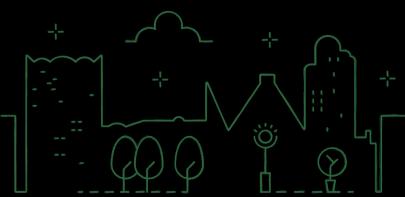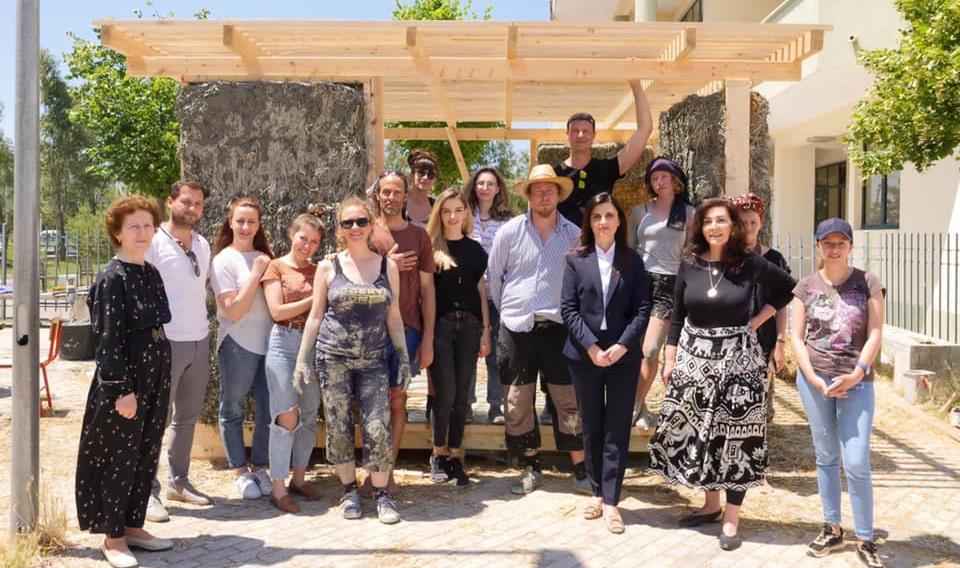7 minute read
Joint Initiative “Beyond Borders”
Next Article
Joint Initiative “Beyond Borders”
Fabiola Laço Egro, CDC “Today for the Future” Representative
The concept of natural building has emerged as an approach to environmental management, during the postearthquake build back in Durrës city. I led this project with the goal to implement a pilot project that would help to change perspectives in Albania. As a national NGO, “Today for the Future” focuses its work on improving the social life of the inhabitants in the areas of intervention. With the initiatives of the “Build Back Better – implementation of natural building in Albania” project, we foster a deeper connection between them and the places they inhabit. I am thankful that Visegrad Fund supported this project. It brought an added value to the construction concepts in Albania by achieving to convene a gathering of the policymakers, international experts from V4 countries, NGOs, businesses, local specialists and students from Albanian Universities to share and gain knowledge and experience. It’s been more than 20 years that I work in the city of Durrës, focusing on the suburban and rural area’s population reintegration and empowerment. These are the areas that are mostly affected by the uncontrolled internal migration process for 30 years. The process has led to problems of a whole host of neighborhoods and villages composed of private dwellings built with no construction standards, no urban planning, lacking appropriate infrastructure and public services. The basic material in the construction industry in Albania are concrete and iron. Facing the challenges posed by rapidly advancing climate change, it is important to step back and rethink what we can do to improve our wellbeing, starting from the families and homes to countries and to our planet. It has become increasingly clear that the materials we choose to build with are affecting populations way beyond the users and occupants of these buildings. Unfortunately, historically disadvantaged communities in Durrës still continue to bear the greatest burden of pollution on their health, for example, Spitalle and Ex-Swamp area (urban waste landfill). Buildings contribute one-third of global greenhouse gas emissions, and so getting buildings to be greener and more natural, can offer one-third of the solution to climate change – and more. Numerous volunteers and activists stepped up and wanted to be part of this project. With their help, everything ran smoothly and connected the community on a higher level. Our purpose as an organization is not only to build step by step bridges between people, communities, countries but in the meantime to raise awareness in order to change the behavior and mentality, help and orient the future generation for sensitive behaviors and actions in favor of the wellbeing of communities in harmony and protection of the nature and healthy environment. The group of volunteers of different ages that joined the action, has proven that there are individuals around the community of all ages who want to be active, embrace the eco-friendly ideas and are ready to


acquire new knowledge and contribute to building new realities. With this knowledge, they can not only pass it on to the future generations or transmit to their parents, families or communities, but they can also use it if another natural disaster strikes, such as the earthquake.
Urszula Martyniszyn, HumanDoc Foundation Representative
The project was aimed to introduce the potential and basis of natural building to, among others, help local people, as the ones that suffered most due to the earthquake, to have some practical tools in the future. This means also providing them with some basics of renovation in terms of new, easy-to-get technologies such as natural building. As HumanDoc, we mainly focus on the exchange and transfer of knowledge among the countries and partners with the assistance of local communities who can also actively participate in the process. The general intention of “Build Back Better” project was to present the potential of natural building. On the one hand, it was supposed to be an answer to the urgent living needs of people who lost their possessions due to the earthquake that happened in November 2019. On the other hand, this project is an expression of concern and care for natural environment. It corresponds with the challenging awareness of the imminent climate catastrophe and, at the same time, remains an attempt to minimize the consequences of over-exploiting the planet. Moreover, it is also a comeback to our roots, appreciation of local values as well as renewable resources. Last but not least, it is also an area for unhampered knowledge and experience exchange of experts from Visegrad Group countries - people who fully agree with each other regarding the need of sustainable development and care for our common good. The whole undertaking directly reflects the values of HumanDoc Foundation and fits to our concept of acting. As HumanDoc, for over 10 years now we have been taking care of promoting art, new technologies and educational, socially engaged actions, knowledge of Global South countries through media and implementing new solutions supporting social development or promoting entrepreneurship. During the last decade, we successfully implemented numerous interdisciplinary projects, which common concept was to support societies and to equalize opportunities. In practice, our values are turned into real action, among others as production of reportages from diverse places in the world or organizing International Documentary Film Festival since 2010 the event gathers over 220 thousand recipients. Moreover, we improve the quality of higher education by introducing new courses at the universities. At the same time, we support our foreign partners, for example in Georgia or Uzbekistan in introducing a systemic solution for combating domestic violence throughout these countries. We are specialized in a comprehensive management of complex, multi-stage projects which we implement with the support of experienced experts who share our values, such as in “Build Back Better” project, where the key was not only the idea itself but also cooperation with partners who truly share our point of view.



The final result of our work is this handbook which provides consolidated knowledge in an innovative frame. This publication aims to present to the readers new possibilities of natural resources in a local context, which at the same time translates into a global one. Also, in this sense natural building project is ideally suited to the goals of HumanDoc as it arouses the belief that our choices and their consequences have a real impact not only on our personal piece of reality, but they are an undeniably consistent part of a larger whole. The more aware our choices will be, also in terms of constructing and the use of local natural resources, the better for us.



Introduction of Area, Social Perspective and Development
Durrës is the second largest city in the country of Albania with a population of more than 400.000 inhabitants. Durrës has increased the complexity of the population by bringing together the community in urban areas, the community coming from migratory areas and the rural community within the 30 years of transition from dictatorial to democratic system 1990-2020. Community residing in rural areas and areas populated by migrant population need admission to other social groups, a trend that exposes them to risk factors such as abuse, violence, deviant and delusional behavior. Durrës is a tourism center and geographically a connection point. It offers potential for development of agriculture, local tourism and agro-processing, which offer great chances for developing local and family economy. Based primarily on tourism, it integrated good resource management, income generation, job creation. The area has the potential of providing opportunities for the unemployed individuals and migration returnees. As previously mentioned, exactly on 26th November 2019, the north-west Albania was hit by a big Earthquake with a magnitude of 6.4 Rihter. To address the effects of the damage and lost revenue as a result of the earthquake, the government concluded that nearly 1.08 billion Euro would be needed in all sectors for recovery. Calculated in figures, the most affected city was Durrës, where the estimated cost of damage reached 310 million Euro. The sectors that reflect the greatest needs are housings with 37179 damaged dwellings, which represent almost 76% of all needs followed by education and infrastructure with 32% of damaged educational constructions and one school completely destroyed. Undoubtedly, the manufacturing sector, business, tourism, heritage and agriculture were among the sectors most affected by the November 26th earthquake. Additionally, followed by the crisis of pandemic COVID19 the number of tourists in the city decreased during 2020-2021. The project started as an initiative in Durrës City to support decision makers, planners and executors of local policy in implementing natural construction concepts in the post-earthquake reconstruction process and improve the quality of construction in the managed area.









